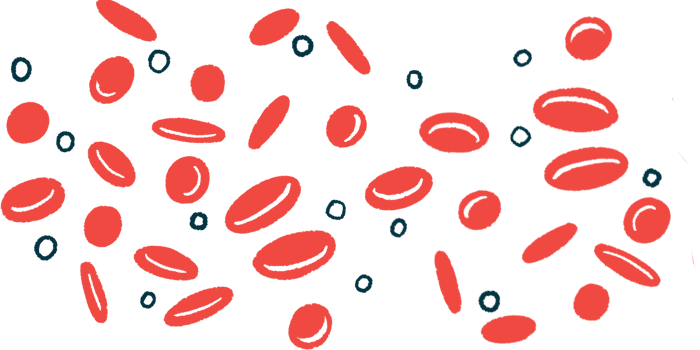Platelet Markers Linked to Heart Failure in Children With PAH-CHD

Markers of a type of blood cell called a platelet — the blood cells involved in blood clotting after injury — were associated with disease severity and heart dysfunction in children with pulmonary arterial hypertension (PAH) and congenital heart disease (CHD), according to a recent study
These findings show that platelet activation markers may be useful noninvasive biomarkers for disease progression and for predicting poor outcomes, the researchers said, adding that “early recognition of high risk patients with PH who need more aggressive treatment is crucial.”
“Non-invasive quick reliable biomarkers to monitor disease severity and prognosis are urgently needed in children with PAH-CHD. Our study reported [platelet markers] as good prognostic biomarkers for adverse outcome in children with PAH-CHD,” the research team wrote.
In fact, the platelet markers showed a 75% sensitivity or true positive rate — the ability of a test to correctly identify those with the disease — for predicting a poor prognosis among the children. Specificity, which measures how well a test identifies people without the disease (true negatives), ranged from 61.5% to 96.6%.
The study, “Platelet Activation Markers in Children with Pulmonary Arterial Hypertension Associated with Congenital Heart Disease,” was published in the journal Pediatric Cardiology.
PAH is characterized by a narrowing of the pulmonary arteries providing blood to the lungs, resulting in increased blood pressure in those arteries. In children, PAH is sometimes associated with CHD — any of a number of birth defects causing heart dysfunction — and often leads to heart failure and early death.
Identifying high-risk patients with pulmonary hypertension early on is key for treatment. Although several candidates have been proposed, an ideal biomarker of PH prognosis in children with PAH-CHD is yet to be found.
Evidence suggests that platelets — the blood cells involved in blood clotting after injury — may be involved in PAH progression, suggesting that measurements of platelet activation could be predictors of PAH prognosis. However, their specific role in children with PAH-CHD has not been thoroughly explored.
To learn more, researchers at Tanta University, in Egypt, now evaluated platelet activation in children with PAH-CHD, CHD only, and healthy children — used as a control group — to determine the relationship between platelet activation and disease outcomes.
A total of 60 children were included in each group. Median ages among the children were 5.5 months in the PAH-CHD group, 3.5 months in the CHD children, and 9 months in the control group.
Results showed that three markers of platelet activation — platecrit, mean platelet volume (MPV), and platelet distribution width (PDW) — were higher in children with PAH-CHD compared with CHD-only or healthy children, altogether suggesting elevated platelet activity in children with PAH-CHD, the researchers said. Of note, platecrit is the volume percentage of platelets in the blood.
Among the children with PAH, platelet measurements were significantly higher in those with more severe disease than those with either mild or moderate disease.
The researchers also performed echocardiograms to evaluate heart function in the children. In children with PAH-CHD, they observed an increased pressure in the pulmonary arteries and a larger diameter of the heart’s right ventricle, which pumps blood to the lungs.
Further, increased right ventricle dysfunction was observed in PAH-CHD patients during both phases of the cardiac cycle: systolic, or during a heartbeat, and diastolic, or in-between heartbeats.
Levels of right ventricle systolic and diastolic dysfunction, diameter, and pulmonary artery pressure were all correlated with levels of the three platelet activation markers, suggesting that platelet activity is related to cardiac dysfunction in PAH-CHD patients.
During a six-month follow-up period, eight children with PAH-CHD died or were re-admitted to the hospital due to failure of the right ventricle. Markers of platelet activation were significantly higher in children with poor than with good prognosis.
As for cut-off values of the platelet activation markers that predict poor prognosis in children with PAH-CHD, the team estimated platecrit at above 0.505%, MPV above 11.2 femtoliters (FL), and PDW over 12.7 FL.
Altogether the findings suggest that these platelet markers “could be used as a promising biomarker to identify PAH-CHD children with poor prognosis who need more aggressive treatment,” the team wrote, adding that these “simple biomarkers … are easily accessible, cheap and don’t need advanced technology.”
“Further investigations are needed to understand the role of platelet activation in patients with PAH‐CHD. Also, more studies with larger sample size are needed to confirm these results,” the researchers wrote.








